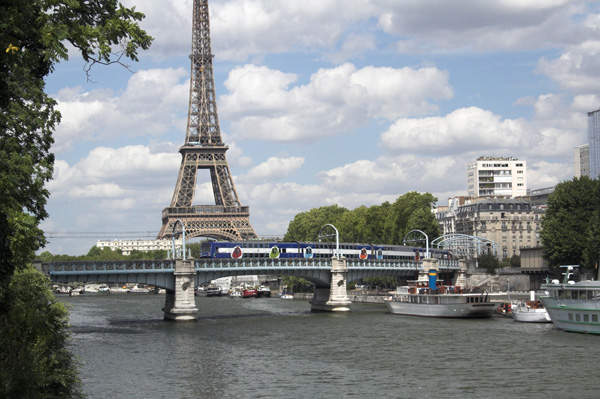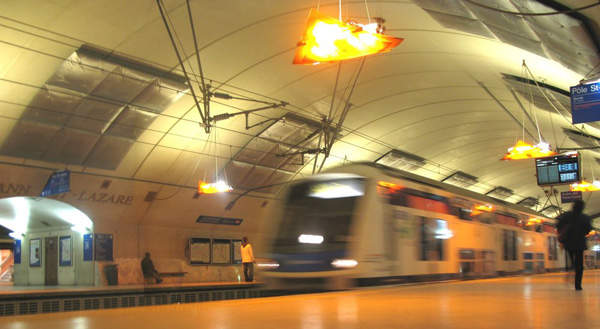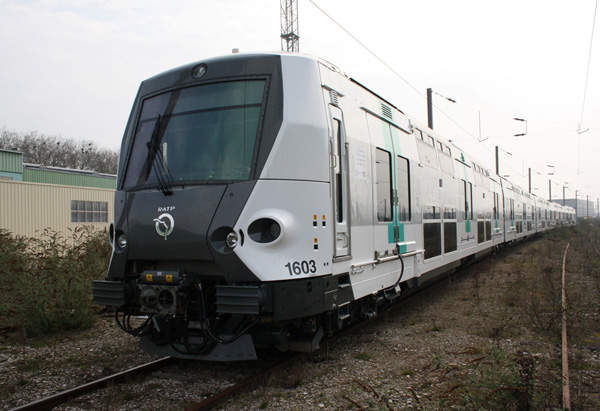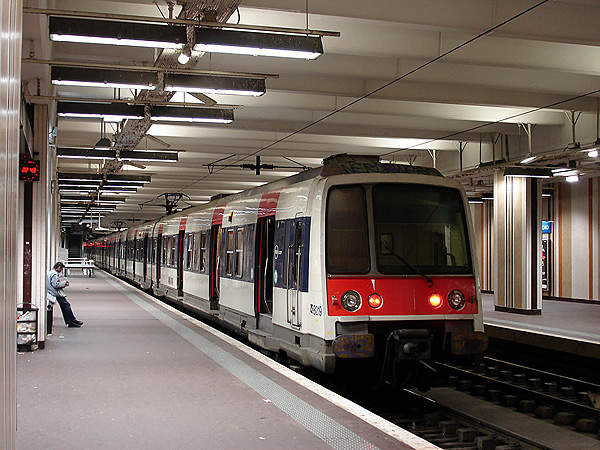Réseau Express Régional, or RER, is a Regional Express Network rapid transit system serving the capital city of Paris and its suburbs in France. It is a combination of a modern metropolis centre underground railway and set of commuter rail lines. The RER and Paris Metro are the major means of rail transport in Paris.
The RER network includes 246 stations with 587km of rail network, of which 76.5km is underground. It is operated in parts by the RATP (Régie Autonome des Transports Parisiens) and SNCF (Société Nationale des Chemins de fer Français).
The lines in the RER network are being renovated and expanded to meet the needs of increased passenger traffic.
Line routes along the Réseau Express Régional network
The RER network has five lines, namely A, B, C, D and E.
Line A, which was inaugurated in December 1969, stretches 108.5km east to west with 46 stations. It has terminals at Saint-Germain-en-Laye, Cergy Le Haut and Poissy in the west, and Boissy-Saint-Léger and Marne-la-Vallée – Chessy to the east. It has a daily ridership of 1.2 million passengers.
Line B, which was inaugurated in December 1977, stretches 80km from north to south with 47 stations. It has terminals at Charles de Gaulle Airport and Mitry-Claye in the north, and Saint-Rémy-lès-Chevreuse in the south. Its annual passenger ridership was 165.1 million in 2004. The southern part of the line from Gare du Nord is operated by RATP and northern part of the line is operated by SNCF.
Line C was inaugurated in September 1979. It stretches 185.6km in a north-west to south-east direction with 84 stations. It has terminals at Pontoise, Versailles – Rive Gauche and Saint-Quentin-en-Yvelines in the north-west, and Massy-Palaiseau, Dourdan-la-Forêt, Saint-Martin d’Étampes and Versailles – Chantiers in south-east. It has an annual ridership of 140 million passengers.
Line D, inaugurated in September 1987, stretches 197km north to south with 59 stations. It has terminals at Orry-la-Ville – Coye in north and Melun, Malesherbes in the south. It has annual ridership of 145 million passengers.
Line E was inaugurated in July 1999. It stretches 52.3km west to east with 21 stations. It has terminals at Haussmann St-Lazare in the west, and Chelles-Gournay and Tournan in the east. It is operated by the SNCF and has an annual ridership of 60 million passengers.
Expansions and renovations on Paris’s rapid transit system
Réseau Ferré de France (RFF), the French National Railways Operator, released a €115m fund in July 2009 for the renovation of Line D. The work is expected to be completed in 2013.
A new station was opened at Saint-Lazare on line E. SNCF released €90m and Klepierre provided €160m fund towards the construction of the station. Spie Batignolles was the main contractor for the project. The station acts as an interchange between the main line and five metro lines of Paris Metro. It is expected to be used by 450,000 passengers daily.
Line E is planned to be extended from La Défense to Mantes-la-Jolie. Systra was appointed to conduct the feasibility study for the project in March 2009. The construction will begin in 2012 and is scheduled to be completed by 2018.
Rolling stock used on the RER railway lines
Each line of the RER rapid transit system uses different rolling stock. Line A operates MS 61, MI 84, MI 2N and MI 09 rolling stock. The MI 09 rolling stock was put into operation from December 2011. These train sets can operate at speeds of 120kmph.
A contract worth €917m to supply 130 units of MI 09 units was given to a consortium of Alstom and Bombardier in 2009, of which 60 train sets were delivered. The remaining train sets are expected to be delivered at a rate of 24 train sets each year until 2014.
The new train sets will replace the MI84 single-decker trains which are currently being operated on the line. A second batch of 70 MI09 train sets will be delivered during 2014-2017 to replace the MS61 fleet.
Line B operates MI 79 and MI 84 train sets. Line C operates Z 5600, Z 8800, Z 20500 and Z 20900 rolling stock. Line D operates Z 5300, Z 5600 and Z 20500 rolling stock. RER Line E operates SNCF Class Z 22500 rolling stock.
Future expansions to rapid transit systems in Paris
The local government of Paris in January 2011 announced that it would fund more than €32.4bn for the development of an automated metro throughout Paris and modernise the existing network. About €5.5bn will be spent on improving and acquiring modern rolling stock.
Funds to the tune of €11.9bn were allocated to the ongoing upgrades and expansions, including a €2.5bn extension of RER Line E to Mantes-La-Jolie via La Défense, along with €1bn to renovations to RER lines C and D.











